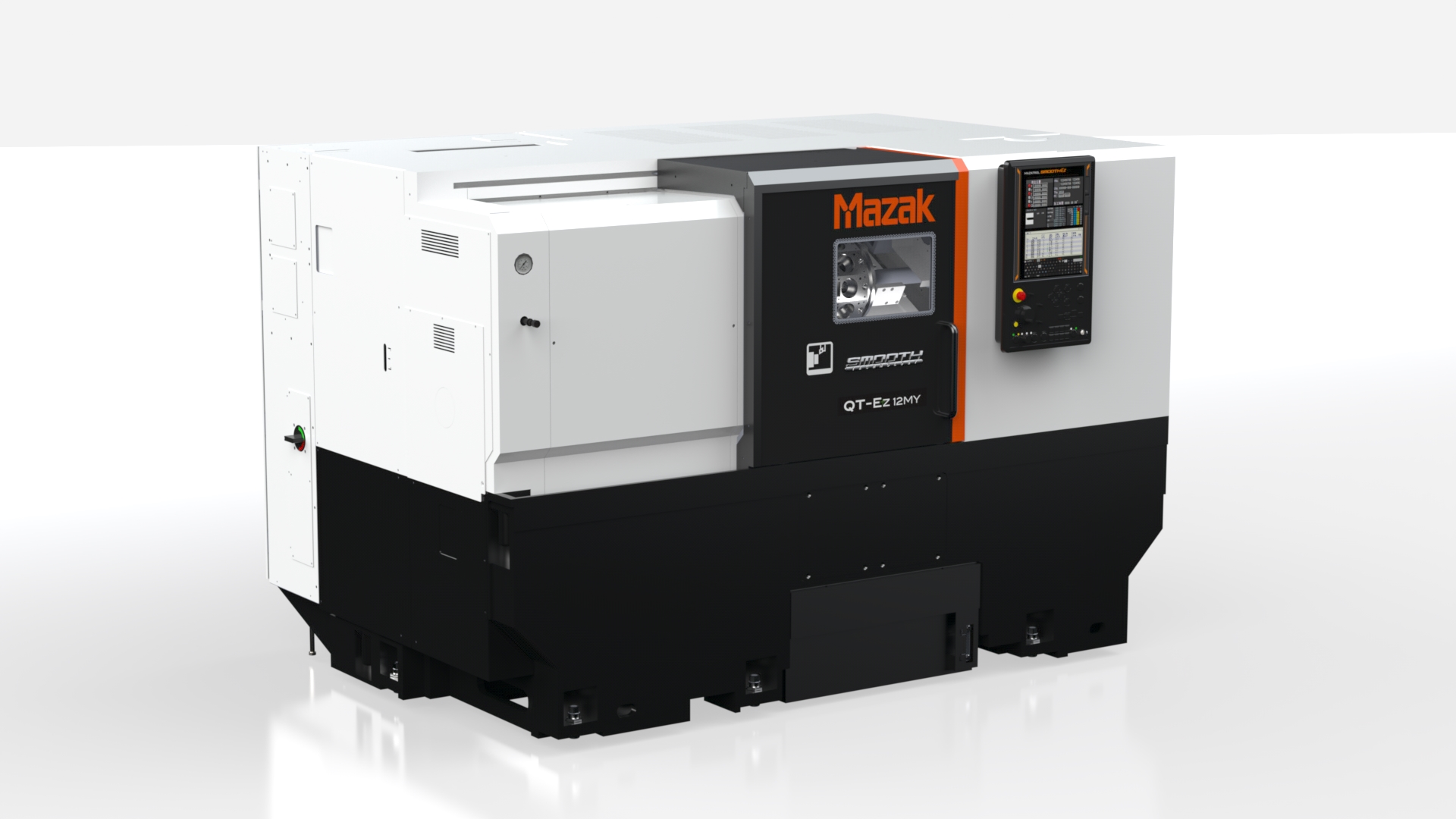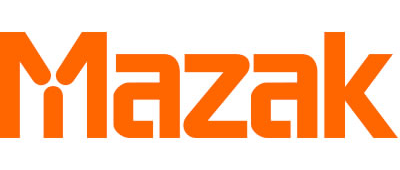
The Kentucky-built Mazak Ez series comes to Canada for the Western Manufacturing Technology Show in Edmonton from May 30 to June 1.
Mazak will feature its QT-Ez 12MY multi-tasking turning center and VC-Ez 20 vertical machining center, both from the series of machines that the company says puts Mazak quality and reliability within reach for virtually any shop with productive, space-saving efficiency at an affordable price.
For multi-tasking part processing, the QT-Ez 12MY features milling and Y-axis off-centerline capability, and for further increased productivity and unmanned operations, the machine seamlessly integrates with a range of automation solutions. These include simple bar feeders and parts catchers as well as full cooperative robot installations such as Mazak Automation Systems’ Cobot Cell System.

While the machine comes standard with a 12” chuck, Mazak offers a smaller 10” option. Available bed lengths are 20” and 40”, and machine turrets include 2-axis drum style with a bolt-on or BMT55 turret for rotary tool applications. Tailstocks are offered with either manual positioning via hydraulic quill or servo positioning capability.
All QT-Ez models feature powerful and reliable integral motor headstocks, Hybrid MX roller guideways and pre-tensioned ball screws supported at both ends for reliable, thermally stable and precise machine axis movement. An innovative bed casting design provides outstanding rigidity as well as streamlined chip flow that helps to eliminate chip accumulation.
Also an automation-ready machine, the Mazak VT-Ez 20’s rugged 40-taper spindle and space-saving design offer unprecedented affordability with a full range of spindle, auto tool changer and chip/coolant management options. The affordable, highly configurable machine meets many production needs with a compact, space-saving design.
Enhanced operator ergonomics and a generous work area ease the loading and unloading of workpieces and tools, while an extremely fast traverse rate of 1,654 ipm (42 m/min) in the X, Y and Z axes enables higher throughput. A 25 hp (18.64 kW) 12,000 rpm (standard) or versatile 29.5 hp (22 kW) 15,000 rpm (optional) spindle offers 81.13 ft-lb (110 Nm) of torque for additional production versatility.
All VC-Ez Series machines sport C-frame designs with X and Y axis motion via moving the table and saddle. For rigidity and repeatable part precision, guideway systems use Mazak’s MX linear roller guide systems, and dual lagged pre-tensioned ball screws ensure precise axis movement. For increased maintenance free operation, the auger-type chip removal systems provide an economical solution, or for increased chip volume the addition of an affordable hinge-type chip conveyor that ships affixed to the machine to eliminate the cost of a second shipping pallet.
To ensure ease of use and programming success, Mazak equips all its Ez Series machines with its MAZATROL SmoothEz CNC that provides dual 800 MHz processors, 512 MB of RAM and a vibrant 15" capacitive touch screen that includes a full keyboard and displays up to 60 lines of code. Within the control, G-code and MAZATROL Conversational programming languages support a full range of programming options directly on the machine, while the MAZATROL TWINS function enables use of Solid MAZATROL, Virtual Machining and Cutting Adviser through Smooth Cam Ai and centralized storage and file management through Smooth Project Manager.
In addition to its Ez Series, Mazak will spotlight its MPower complete customer service and support program that comes with every Mazak machine. The Mazak team will also be on hand to discuss special events happening at the Mazak Edmonton Technical Center.
Contact Details
Related Glossary Terms
- chuck
chuck
Workholding device that affixes to a mill, lathe or drill-press spindle. It holds a tool or workpiece by one end, allowing it to be rotated. May also be fitted to the machine table to hold a workpiece. Two or more adjustable jaws actually hold the tool or part. May be actuated manually, pneumatically, hydraulically or electrically. See collet.
- computer numerical control ( CNC)
computer numerical control ( CNC)
Microprocessor-based controller dedicated to a machine tool that permits the creation or modification of parts. Programmed numerical control activates the machine’s servos and spindle drives and controls the various machining operations. See DNC, direct numerical control; NC, numerical control.
- computer-aided manufacturing ( CAM)
computer-aided manufacturing ( CAM)
Use of computers to control machining and manufacturing processes.
- conversational programming
conversational programming
Method for using plain English to produce G-code file without knowing G-code in order to program CNC machines.
- gang cutting ( milling)
gang cutting ( milling)
Machining with several cutters mounted on a single arbor, generally for simultaneous cutting.
- inches per minute ( ipm)
inches per minute ( ipm)
Value that refers to how far the workpiece or cutter advances linearly in 1 minute, defined as: ipm = ipt 5 number of effective teeth 5 rpm. Also known as the table feed or machine feed.
- machining center
machining center
CNC machine tool capable of drilling, reaming, tapping, milling and boring. Normally comes with an automatic toolchanger. See automatic toolchanger.
- milling
milling
Machining operation in which metal or other material is removed by applying power to a rotating cutter. In vertical milling, the cutting tool is mounted vertically on the spindle. In horizontal milling, the cutting tool is mounted horizontally, either directly on the spindle or on an arbor. Horizontal milling is further broken down into conventional milling, where the cutter rotates opposite the direction of feed, or “up” into the workpiece; and climb milling, where the cutter rotates in the direction of feed, or “down” into the workpiece. Milling operations include plane or surface milling, endmilling, facemilling, angle milling, form milling and profiling.
- turning
turning
Workpiece is held in a chuck, mounted on a face plate or secured between centers and rotated while a cutting tool, normally a single-point tool, is fed into it along its periphery or across its end or face. Takes the form of straight turning (cutting along the periphery of the workpiece); taper turning (creating a taper); step turning (turning different-size diameters on the same work); chamfering (beveling an edge or shoulder); facing (cutting on an end); turning threads (usually external but can be internal); roughing (high-volume metal removal); and finishing (final light cuts). Performed on lathes, turning centers, chucking machines, automatic screw machines and similar machines.









